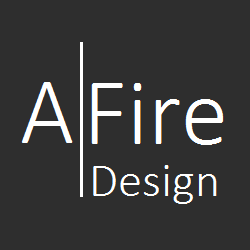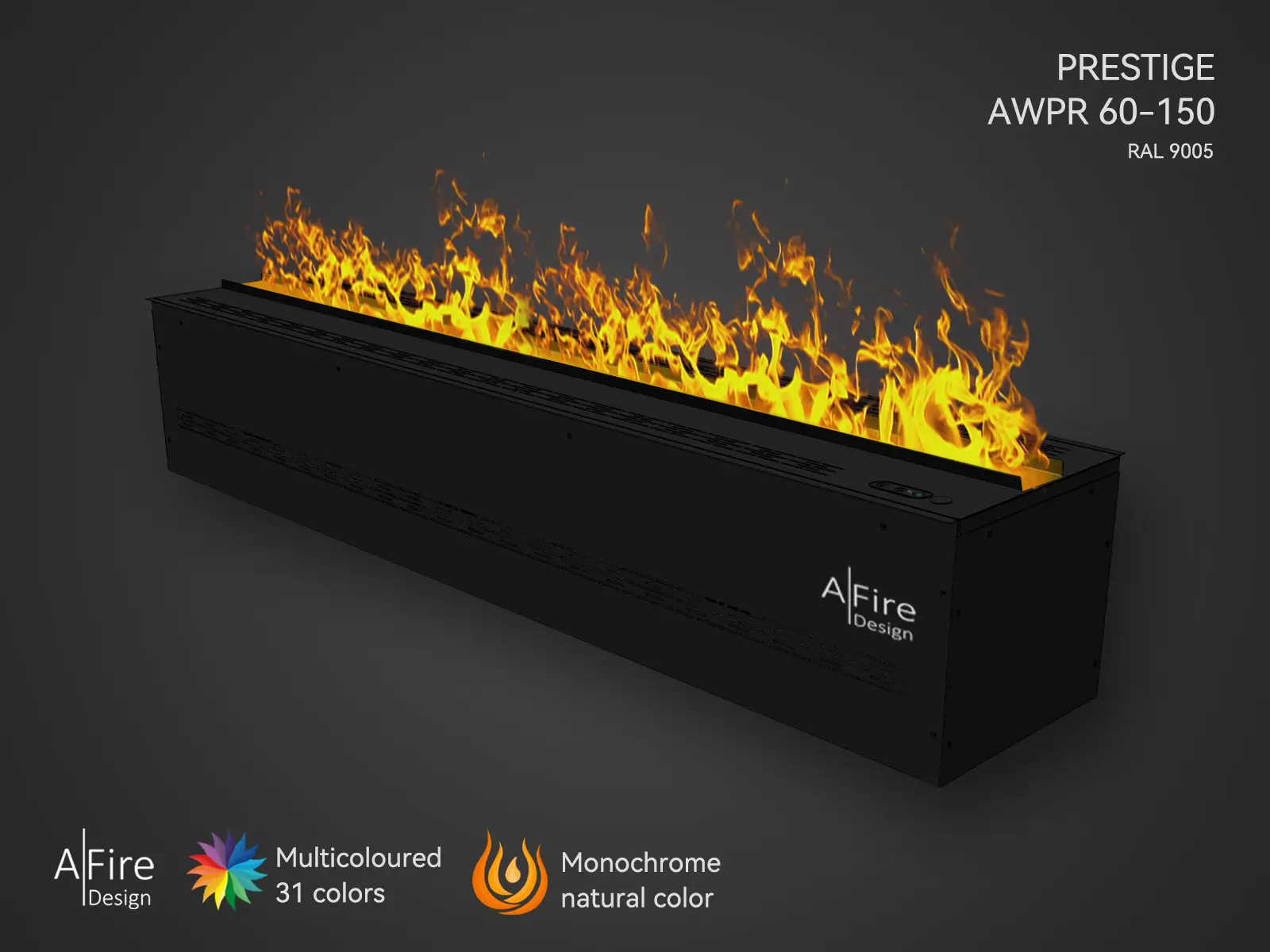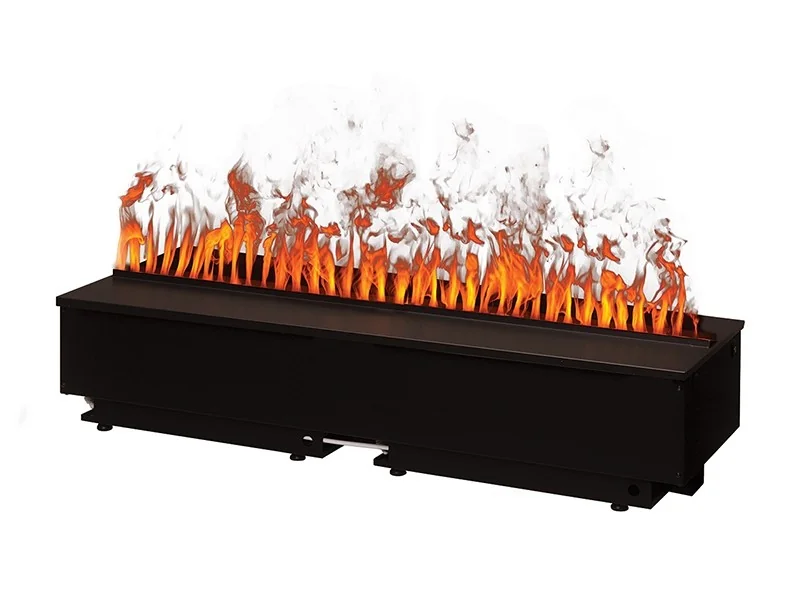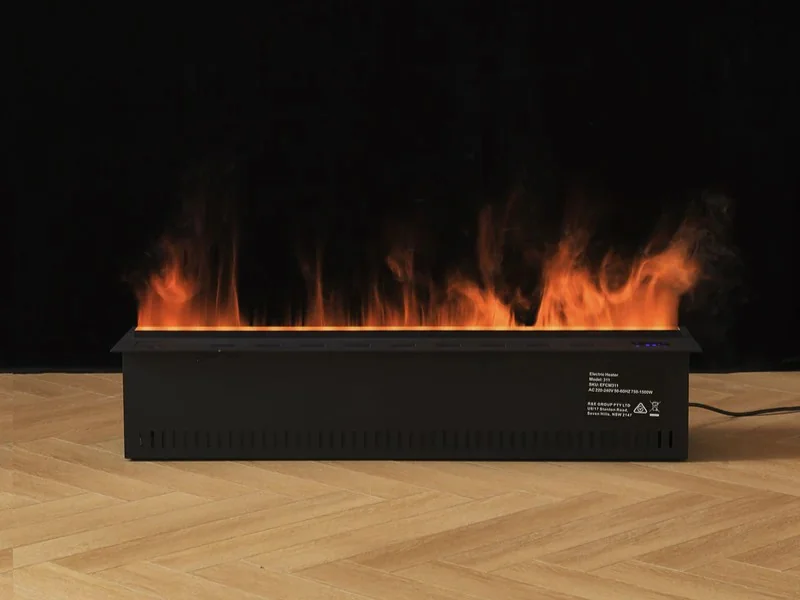Water Vapor Fireplaces — Comparisons by Aquafire
Decide fast between our ranges, market alternatives, and technologies — all on one page.
- ⚡ Quick comparison Instant overview
- 🧱 Our ranges LITE, ADVANCE, PRESTIGE
- 🆚 Aquafire vs competitors Key points & differences
- 🔥 Technologies Water vapor, ethanol, electric, wood, gas
- ❓ FAQ Essential questions
For all ranges, detailed specs and complete information, visit the main “Water Vapor Fireplace” page.
Quick choices for Aquafire ranges
- LITE & GATSBY From €920 / $980 / £820 — Essential residential: simple, elegant, single-unit use, straightforward installation.
- ADVANCE From €1,250 / $1,500 / £1,150 — Higher realism: denser flames, modular lines of fire, touch buttons + extended features, up to 20 h autonomy, UVC sterilization.
- PRESTIGE From €1,690 / $2,000 / £1,590 — Aquafire signature: natural flames + colors, smartphone app, suitable for public venues (ERP), for intensive, autonomous use and high-end residential design projects.
(*Prices shown exclude taxes and shipping.)

Aquafire range comparison LITE, ADVANCE & PRESTIGE
(*Prices shown exclude taxes and shipping.)
| Features | LITE | ADVANCE | PRESTIGE |
|---|---|---|---|
| Positioning |
€920 / $980 / £820 Simple & attractive Residential projects See the LITE range |
€1250 / $1500 / £1150 Exceptional natural flames Residential & professional Best seller See the ADVANCE range |
€1690 / $2000 / £1590 Public venues, prestige residences Natural & colored flames See the PRESTIGE range |
| Installation | Simplified installation with side-mount design (no bottom feet required). | ||
| Vent grilles | Simplified install without front vent grilles thanks to the top air intake. | ||
| AFIRE patented “Dual Air-Vapor Flow” |
The most beautiful flames in the world 🌟 Thanks to the patented “Dual Air-Vapor Flow”, vapor is propelled by a second air outlet to create truly dancing, realistic flames — not just a flat fog cloud like competing products. |
||
| Flame color | Natural | Natural | Natural + multicolor (orange LEDs + RGB) |
| LEDs | 24 orange LEDs / 100 cm (40 in) |
38 orange LEDs / 100 cm (40 in) |
74 LEDs: 38 orange + 36 RGB / 100 cm (40 in) |
| Flame adjustment | Height, speed | Height, speed, brightness | Height, speed, color, brightness, fade |
| Power supply | 24 V with included adapter — avoids water/electricity hazards linked to 100–240 V. | ||
| Controls | Remote, buttons | Remote, touch control buttons, dry contact | Remote, smartphone app, touch control buttons, dry contact |
| Modularity | — | Create continuous lines of fire; control multiple units with one remote |
Create continuous lines of fire; control multiple units with one remote |
| UVC | — | Water disinfection | Water disinfection |
| Water filling | Manual with integrated pump | Manual + automatic with integrated pump |
Manual or automatic with integrated pump, or direct mains water connection |
| Runtime | Up to 12 h | Up to 20 h | Up to 20 h Unlimited with mains water |
| AFIRE services | Premium advice, assistance and follow-up throughout your product’s lifetime. | ||
| Mist maker | Very quick replacement in under 5 minutes without removing the unit from its recess — unlike most competing systems where the operation is long and complex. | ||
| Spare parts | Permanent spare-parts stock with fast shipping. | ||
Aquafire vs competitors
| Features | Aquafire | International brands | Generic imported products |
|---|---|---|---|
| Price | ★★–★★★★Depends on range. | ★★–★★★★Depends on range and distributor. | ★–★★Low prices but very high risks: unpredictable logistics, returns almost impossible, very poor quality/finishes, after-sales and spare parts often non-existent; fog-like look without real flames. |
| Flame color / LED system | Two LED rows: orange (natural flame) + RGB → natural, multicolor or mixed result, even along the whole length (AFIRE technology/patents). | Single LED row (orange or RGB depending on model) → “natural” mode often less faithful. | Single LED row (often orange) → uneven RGB variants, inconsistent rendering. |
| Visual rendering (density / structure) | Patented dual air-vapor flow: vapor is sheared by a parallel air stream → lively flames with depth and natural randomness. | Single fan: straight, regular vapor jet; uniform look without depth (pressurized-fog effect). | Basic ventilation: diffuse cloud, uneven contrast, little structure. |
| Installation | Side-mount design, no bottom feet → easier recess fit and clean flush finish. (AFIRE patents.) | Feet/supports required, no side-mount → more complex fit and less flush finish. | Visible supports, irregular tolerances → unpredictable integration. |
| Vent grilles / airflow | Top air intake (AFIRE-patented) → no front grille, clean lines. | Mandatory vent grille (fascia/plinth depending on models). | Mandatory and often more visible grille (less optimized airflow). |
| Controls & integration | Remote & touch buttons; dry contact and multi-unit control for fire lines (ADVANCE/PRESTIGE); smartphone app (PRESTIGE); RS485 (PRESTIGE 3). | Standard remote, apps on some models; multi-unit control generally absent or complex. | Basic remote; no dry contact, no coordinated control. |
| UVC (water treatment) | Yes: AFIRE-patented UVC (tank disinfection, comfort for intensive use). | No (feature not offered). | No (feature absent). |
| Power | 24 V (SELV) via 100–240 V adapter — low-voltage safety ⇒ reduced water/electricity risk. | 100–240 V. | Mostly 100–240 V; specs/connectors vary, uneven documentation. |
| Water filling | 3 modes: manual, automatic (built-in pump), direct mains connection (depending on models — e.g., PRESTIGE) → continuous runtime possible. | Manual with removable tank (open the unit and remove ornaments each time); direct feed optional. | Manual, sometimes automatic; generally no direct mains connection. |
| Runtime on one fill | LITE ≈ 10 h; ADVANCE / PRESTIGE up to > 20 h; continuous with direct mains (depending on models). | ≈ 10 h; continuous with direct mains (option). | Runtime rarely specified; generally no direct mains option. |
| Delivery | 3–5 business days (typical stock), tracked shipping. | Similar lead-times (stock/distributor dependent). | Several weeks possible; unreliable logistics. Returns often impossible and costly (international freight, customs) and subject to exporter approval on receipt. |
| After-sales | Direct expert support, multilingual (international); permanent spare-parts stock, fast shipping, clear docs, diagnostics & assistance by Aquafire-trained specialists. | Distributor/service-center networks; lead-times/stock vary by country. | Unreliable or non-existent support (marketplace/reseller), spare-parts availability uncertain, slow and expensive cross-border exchanges. |
| Mist makers | Fast top access without removing the unit: replacement in < 5 min via hatch/well; tracked references and parts in stock. | Internal access: partial disassembly of unit and ornaments; lead-times/stock vary by country. | Very complex access (often undocumented); non-standardized models, uncertain parts availability. |
Water vapor fireplace vs ethanol, electric, wood, gas
| Criteria | Water vapor | Ethanol | Electric | Wood | Gas |
|---|---|---|---|---|---|
| Price (unit + installation) | ★★–★★★★ moderate to high (length, cladding) |
★★–★★★★ varies widely (safety/automation) |
★–★★ most affordable (entry level) |
★★–★★★★★ high: unit + flue + installation |
★★★–★★★★★ high: venting + certified installer |
| Visual realism (flames) | Very realistic flame effect (no combustion). | Real flames (natural look). | Simulation; often not very realistic. | Real flames (authentic). | Real flames but often very regular. |
| Heating | No heating pure décor, cold flame |
With heat real auxiliary heat, real flames |
With heat built-in, can be disabled |
For heating traditional stove/fireplace |
For heating adjustable, thermostat |
| Safety | Very high (no combustion; cold flames). | Flammable fuel; burn risk. | High (electrical standards). | Risk of sparks, burns, fire. | Strict installation & checks. |
| Odors / smoke / CO | No smoke/CO; no odor. | CO₂/odors; ventless but requires normal room ventilation. | No combustion. | Smoke, fine particles; flue required. | Fine particles, harmful gases; flue required. |
| Installation / venting | Simple recess, no flue. | Simple recess, no flue. | Very simple (wall socket), no flue. | Flue + chimney work. | Gas supply + venting. |
| Public venues (hotels, restaurants, stores) | Favorable (no combustion). | Strict constraints / sometimes prohibited. | Favorable. | Highly constrained. Often prohibited. | Highly constrained. Often prohibited. |
| Running costs | Very low. | Recurring fuel. | Electricity (variable). | Wood purchase + storage. | Subscription + consumption. |
| Maintenance | Mist maker replacement + cleaning. | Firebox cleaning, fuel handling. | Low (dust/ventilation). | Mandatory chimney sweep, ashes. | Mandatory periodic checks and cleaning. |
| Design flexibility | Free recessing, long continuous lines. | Flexible and modular. | Highly flexible. | Constrained by flue routing. | Flexible but constrained by venting. |
| Controls & smart home | Remote, app, and dry-contact depending on model. | Remote for automatic models. | Remote, often app. | Manual. | Remote, thermostat. |
| Environment | Water vapor: no combustion; zero emissions; low power consumption. | Ethanol (automatic): CO₂; virtually odorless; bioethanol = renewable energy. | Electric: zero on-site emissions; impact depends on the country’s power mix. | Wood: renewable energy but high particulate and smoke emissions to the outside, frequent urban restrictions; flue required. | Gas: fossil fuel; CO₂; venting required. |
FAQ — Fireplace comparisons (water vapor, ethanol, electric, wood, gas)
Which solution is the safest for a family (children, elderly people)?
Water vapor: cold flame, no combustion, 24 V → very high safety.
Electric: no combustion, but the front panel/air outlet can get warm.
Ethanol/Wood/Gas: real flames → very hot surfaces, strict safety rules.
Which technologies are the most suitable for public venues (hotels, restaurants, retail stores)?
Water vapor and electric: generally approved (no combustion).
➜ See our fireplaces for hotels, restaurants & commercial spaces
Ethanol/Wood/Gas: restrictive or even prohibited depending on location; certificates, clearances, and ventilation required if combustion is involved.
What is the right choice for a decorative fireplace without heating?
Water vapor: cold flame, vent-free, very high safety and low operating cost. Electric can also work (simulation) depending on the desired look.
I want a bit of heat: ethanol or electric?
Electric: built-in heater (can be turned off).
Ethanol: real supplementary heat with real flames — choose automatic ethanol burners; ensure normal room ventilation according to best practices.
To actually heat a room, what should I choose?
Wood or gas: real flames,
Which fireplaces work without a flue?
Water vapor, ethanol and electric: all operate vent-free.
Different safety requirements: liquid fuel for ethanol; low voltage and cold flame for water vapor.
What is the overall price range (equipment + installation)?
➜ See the detailed comparison by technology | See our Aquafire ranges
What is the ecological impact and emissions for each technology?
In short:
- Water vapor: no combustion; zero emissions; low electricity consumption.
- Electric: zero emissions; impact depends on the country’s energy mix.
- Ethanol (automatic): CO₂; almost odorless; bioethanol = renewable energy.
- Wood: renewable energy but high particle and smoke emissions outdoors; frequent city restrictions; chimney required.
- Gas: fossil fuel; CO₂; venting required.
To learn more, visit our eco-friendly fireplaces page.
What maintenance should be expected?
Water vapor: cleaning + replaceable mist maker — see our maintenance guide.
Electric: low (dust/ventilation).
Ethanol: burner + fuel.
Wood: mandatory professional chimney sweeping + ashes.
Gas: periodic mandatory inspections by a professional.
Can the fireplace be controlled (remote, app, smart home)?
Water vapor: remote control, app and dry contact/RS485 depending on model.
Ethanol: choose automatic models with remote control and dry contact.
Gas/Electric: remote/app controls common.
Which technology offers the most flexibility in terms of built-in installation and length?
Water vapor, ethanol and electric: very flexible (long linear designs, easy built-in installation, vent-free).
Wood/Gas: limited by the need for a venting flue.
Need to go further? Check the technology comparison or our Aquafire ranges.



